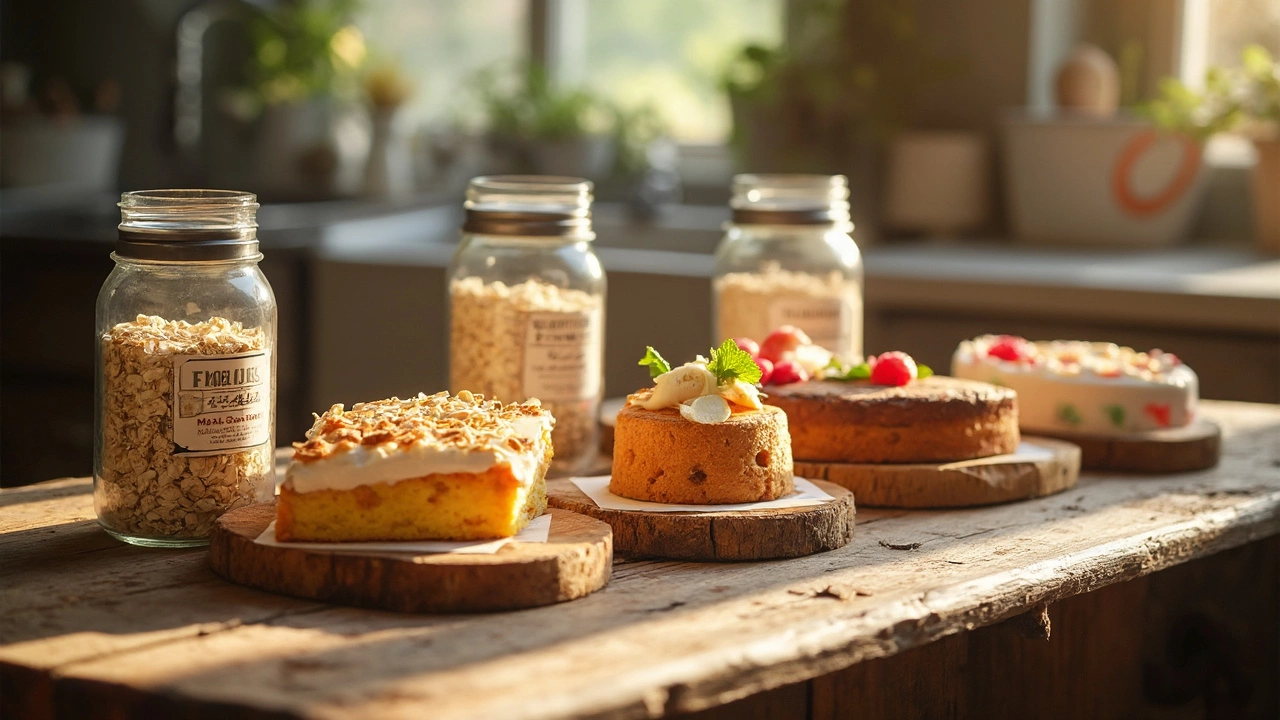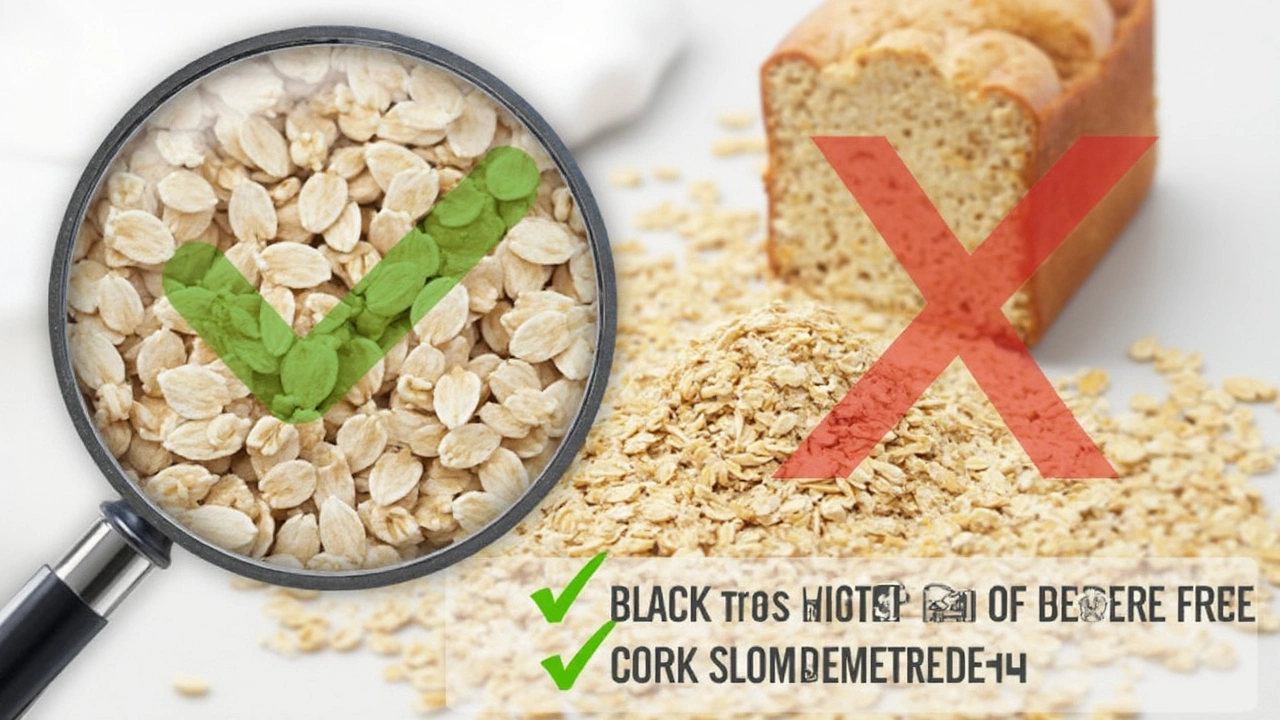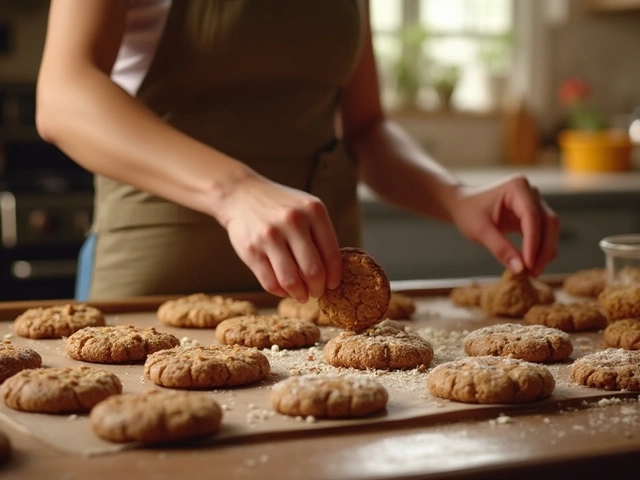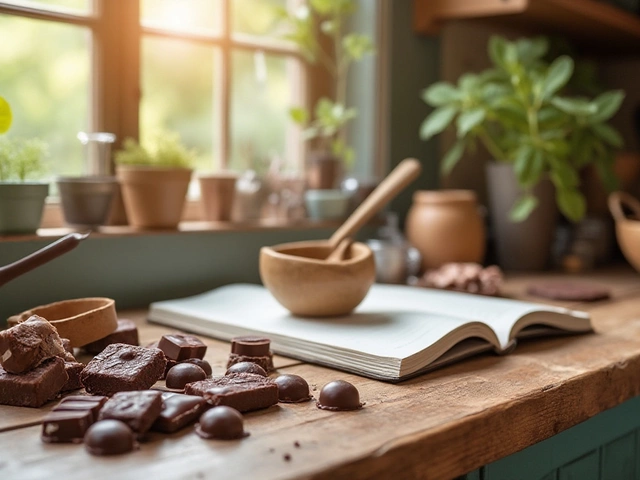
Ever grabbed a bag of oats and wondered if they're safe for gluten-free baking? You're definitely not the only one. Oats are everywhere—granola, cookies, morning porridge, and yes, even cakes that claim to be gluten-free. But things aren't as simple as they look on the box.
People with celiac disease or gluten sensitivity have to steer clear of certain grains—like wheat, barley, and rye—since their bodies react badly to gluten. That's pretty straightforward. But oats? On paper, they seem safe. In real life, it's a bit more complicated. Oats themselves don’t have gluten, but there’s a catch, and it can trip up even the most careful baker.
Grab any standard container of oats, and chances are, you'll see a warning about possible wheat contamination. Weird, right? That’s because oats often share fields, trucks, and machinery with gluten-packed grains. A little mixing happens, and suddenly your supposedly gluten-free cake isn’t so safe anymore.
- What Is Gluten and Where Does It Hide?
- Are Oats Naturally Gluten-Free?
- Why Oats Can Still Be Risky
- Choosing the Right Oats for Gluten-Free Cakes
- Tips for Baking with Gluten-Free Oats
What Is Gluten and Where Does It Hide?
Gluten is a group of proteins found mainly in wheat, barley, and rye. It's what helps bread rise and gives baked goods that chewy texture everyone loves. Most people can eat gluten with zero trouble. But for folks with celiac disease or gluten sensitivity, gluten is a big problem. Eating it can lead to gut issues, headaches, and a long list of other symptoms.
Now, gluten isn’t just in bread and pasta. It hides in a bunch of places you’d never expect. Here’s where it shows up the most:
- Wheat-based foods: Stuff like cakes, cookies, flour tortillas, and pastries.
- Beer and some alcoholic drinks: Made from barley or rye.
- Soups and sauces: Many use flour to thicken.
- Processed foods: Crackers, energy bars, cereals, even some flavored chips.
- Some soy sauce, salad dressings, and marinades.
Let’s get visual. The table below breaks down common foods with and without gluten:
| Food | Contains Gluten? |
|---|---|
| Wheat bread | Yes |
| Oats (regular, not certified) | Maybe (risk of cross-contamination) |
| Rice | No |
| Corn tortillas | No |
| Barley soup | Yes |
| Salad dressing | Depends on brand/ingredients |
If you’re watching out for gluten, don’t just eyeball stuff by name. Scanning the ingredient list is a must—labels can be sneaky. You’ll start to spot hidden gluten in places you never thought mattered, even in foods you’ve probably trusted for years.
Are Oats Naturally Gluten-Free?
Here’s the plain answer: oats are naturally gluten-free. Unlike wheat, barley, and rye, the oat grain doesn’t produce gluten on its own. If you grew oats in a field that never touched wheat or barley, and then processed those oats in squeaky-clean, wheat-free machines, the end product would have zero gluten.
So why all the fuss? Well, most commercial oats don’t get this VIP treatment. They’re often grown right next to gluten grains or handled in the same facilities. Even a tiny bit of stray wheat dust can sneak gluten in. That’s enough to trigger symptoms for people with celiac disease or those who are highly sensitive to gluten.
Another thing to keep in mind: oats contain a protein called avenin. Avenin isn’t gluten, but it’s similar enough that a small number of people with celiac disease might still react to it. This is rare, but it is something to think about if you’re dealing with unexplained symptoms, even after ditching obvious gluten sources.
So, if you’re making gluten-free cakes and want to use oats, you need to be extra careful about the source. Look for packaging that says "certified gluten-free"—that means the company has gone the extra mile to keep any stray gluten out. Plain old supermarket oats usually don’t cut it for strict gluten-free baking.

Why Oats Can Still Be Risky
Here’s where things get messy. While plain oats on their own don’t have gluten, most oats you find in supermarkets aren’t grown, transported, or processed in isolation. They often share equipment and storage with grains like wheat and barley. This leads to cross-contamination, which means gluten sneaks into the oats. Even tiny bits are enough to cause problems for anyone sensitive.
To show just how common this is, check out what happens during oat processing:
- Oats and wheat might grow in neighboring fields, so harvests mix.
- Transport trucks haul oats, then wheat—usually with no serious cleaning between loads.
- Processing plants run both oats and gluten grains on the same machines.
A study in 2023 tested American commercial oat products and found that 80% of regular oats had detectable gluten. That’s not exactly a safe bet when you’re avoiding gluten in cakes.
| Oat Product Type | Percent with Gluten Contamination (%) |
|---|---|
| Regular oats | 80% |
| Certified gluten-free oats | <1% |
If you spot “gluten-free” on an oat package, it means the oats have been grown, harvested, and processed separately from gluten grains. There’s regular testing too, so you’re much less likely to get sick from cross-contact.
Some people with celiac disease react to oats even when they’re certified gluten-free. This is rare. It’s a different protein in oats (avenin) that triggers the reaction. Not your typical gluten issue, but something to keep in mind if you’re super sensitive.
The bottom line? Baking with regular supermarket oats isn’t safe for gluten-free cakes unless you see the gluten-free certification. Double-check every package, even if it looks harmless at first glance.
Choosing the Right Oats for Gluten-Free Cakes
All oats start out gluten-free when they’re growing in those wide open fields, but what happens next determines if they stay that way. Most oats get mixed with wheat, rye, or barley during harvesting, transport, or even packing. That’s why regular oats just won’t cut it for anyone who needs to avoid gluten, especially not for your next batch of gluten-free cakes.
Here’s the trick: look for oats labeled “certified gluten-free.” That label isn’t just there for show. It means the oats have been grown, processed, and packaged away from gluten grains, with regular testing to make sure cross-contact stays below the legal limit—currently less than 20 parts per million (ppm), which is the worldwide safety standard. Brands like Bob’s Red Mill and GF Harvest test their oats to check every batch stays safe.
Here’s a quick rundown of oat labels and what they mean for your gluten-free baking:
| Label | What It Means | Safe for Gluten-Free? |
|---|---|---|
| Regular Oats | No gluten-free controls. May be contaminated. | No |
| Organic Oats | Grown without chemicals, but might still touch gluten grains. | No |
| Oats Labeled "Gluten-Free" | Tested and certified, so kept apart from wheat in every step. | Yes |
Keep in mind, not everyone with celiac disease can tolerate oats even when they're certified gluten-free. A small number of people react to a protein in oats called avenin, which acts a bit like gluten in sensitive intestines. So, if you're new to baking with gluten-free oats, check in with your doctor first, especially if you’re celiac or very sensitive.
When you shop, look for brands that are totally transparent about their process, like posting test results online or mentioning exactly how they separate their products. It might cost a buck or two more, but you’re paying for peace of mind—and, let’s be honest, a cake that won’t wreck your day.
And here’s the most important thing: swap regular oats for gluten-free oats in your favorite cake recipes for safe, tasty results, with the texture you expect. It’s a game-changer in gluten-free baking.

Tips for Baking with Gluten-Free Oats
If you’re set on using oats in your gluten-free cakes, a few smart moves can save you from a kitchen fail and possible stomach problems. Let’s break it down to the basics so you can bake with confidence.
- Check the Label: Only buy oats that say “certified gluten-free.” Regular oats, even if they look the same, aren’t safe for everyone needing to dodge gluten. Certification means they’re tested, cleaned, and kept away from wheat, barley, and rye the whole way from growing to packaging.
- Start Small: Some folks with celiac or gluten issues can still react to oats because of a protein called avenin. If you’re trying out gluten-free oats for the first time, eat a tiny portion and see how you feel before adding them to your cake batter.
- Grind Your Own Oat Flour: Gluten-free oat flour can cost more than the regular stuff, but you can blitz certified gluten-free oats in a blender or food processor. Just check it’s a clean machine if you bake with wheat sometimes, to avoid cross-contact.
- Don’t Skip Binding Agents: Oats can make cakes crumbly. Using eggs, flaxseed, or chia seeds helps bind everything together and gives your cake a nice, moist crumb instead of a dry mess.
- Watch Your Ratios: You can usually swap oat flour for about a third to half of the regular flour in a gluten-free cake recipe. Too much, and your cake might get dense. Try a mix of oat flour and another gluten-free flour like almond or rice flour for a better texture.
- Moisture Matters: Oats soak up liquid like a sponge. If your batter seems too thick, add a splash of plant milk or water to loosen it up. That way, you don’t end up with a dry cake.
If you’re curious about the difference between regular and certified gluten-free oats, here’s a quick look:
| Type of Oats | Gluten-Free? | Usual Price (per lb) | Recommended For |
|---|---|---|---|
| Regular Oats | No | $1 - $2 | Non-gluten-free baking |
| Certified Gluten-Free Oats | Yes | $3 - $6 | Safe for gluten-free cakes |
If your cake needs to be truly safe, keep your baking area and utensils away from gluten-containing products. Even crumbs can be a problem for someone really sensitive. Most of all, trust the label and your gut—literally!
And if you land on a winning oat-based gluten-free cake recipe, make a note of the exact oats you used. Consistency is key if you want the same tasty results next time.





